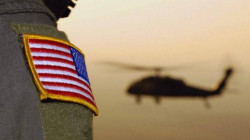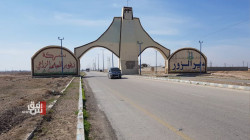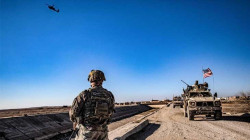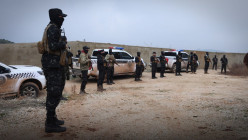Resurgence of Isis spreads fear in Syria as fresh violence reopens old wounds
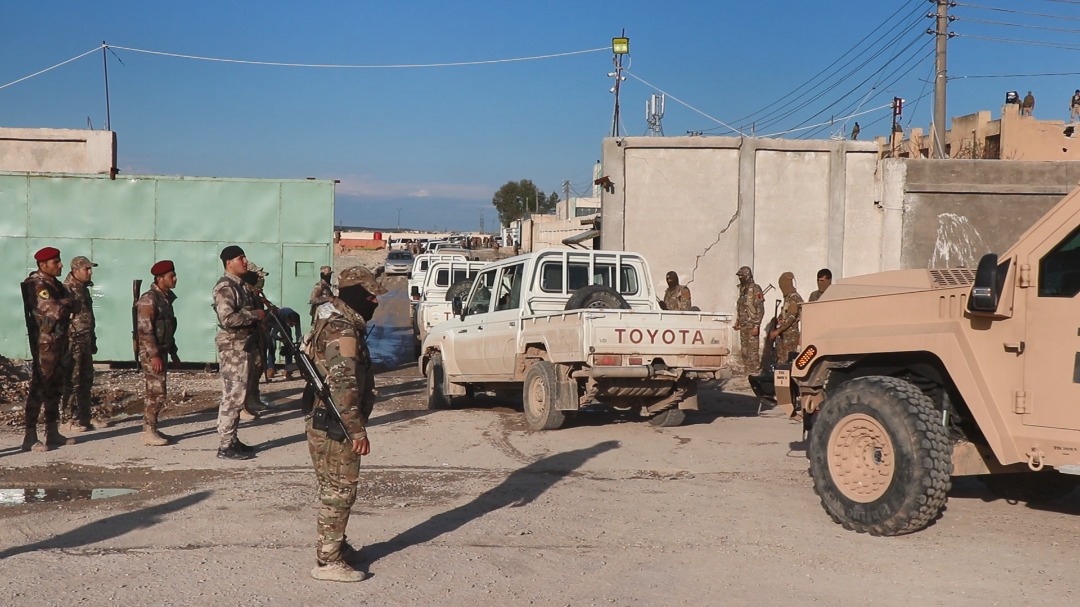
Shafaq News/ Three years after its destruction, Isis is staging a comeback that threatens the area’s fragile calm and puts locals and leaders on high alert in Syria’s divided east, reports Bel Trew from Deir Ezzor
The Syrian mother started receiving threatening text messages from the militant Islamist terrorist group, thought to have been defeated by Russian forces and a US-led coalition nearly three years ago. “Go back to your good Islamic principles,” reads the first text she shows The Independent. “Stay away from working with the infidels. Or else.”
The militant Islamist group made its last stand in the eastern province of Deir Ezzor, where Sara lives. After the final surrender, when Syrian and foreign Isis members were packed off to jail, the west largely forgot about this corner of the war-torn country.
But the residents of Deir Ezzor fear that Daesh is making a comeback, and few people are more familiar with the horror of life under the militants than Sara.
Sara was pregnant when she was arrested in 2016, alongside her sister, for allegedly colluding with the coalition fighting Isis forces.
The only reason Sara survived is because an Isis “judge” had ruled that she should give birth before being executed. Minutes after a difficult delivery on death row, her Daesh jailers prised her baby from her arms and told her the death sentence would be carried out imminently.
But a general amnesty that had been brokered by local tribal leaders was signed at the eleventh hour, and Sara was eventually reunited with her family.
Her sister was not so lucky. Sara does not know if she is dead or alive. Two of Sara’s cousins and her best friend were also killed by Isis. And now, just as the family try to rebuild their lives, and come to terms with the massive losses they have suffered, the militant Islamists are spreading fear again.
“They know me. They know my mobile number. They used my name. They know who I am,” Sara says quietly, sitting on the front porch of her cottage, as her five-year-old son plays in the background.
The “infidels” they accuse Sara of “working with” are the Kurdish-led authorities, who are among Isis’s bitterest enemies.
“Threats from sleeper cells in this area are on the rise,” Sara adds. “I’m afraid.”
Sara is not alone. Across the villages on the east banks of the Euphrates, families tell similar stories of how the militants are slowly and quietly regaining ground and influence.
Tribal leaders, military commanders and analysts believe Isis is recruiting new members among poverty-stricken locals and becoming emboldened to carry out violence by exploiting uncertainty and tension caused by warring factions in the simmering borderlands. Businesses have been extorted and shops raided, while several local leaders, from police to municipality members, have apparently been assassinated.
Outsiders are advised to cover their faces and not to move around after sundown. A few areas are unreachable. People keep their heads down.
Some residents, disgruntled with all sides of Syria’s seemingly never-ending civil war and increasingly unhappy with the local Kurdish-led security forces, have begun to heed Isis’s call.
Tarek, 37, whose teenage brother-in-law was dragged out of school and shot dead by Isis terrorists during the caliphate, said it has got to the point where “anyone who has a high position in any kind of work is at risk”.
“The assassinations worry us,” he says, asking to remain anonymous in case he becomes a target himself.
“Two local municipal leaders were killed two months ago, and one in the internal security was also killed. We know it was Isis.”
The Kurdish-led Syrian Democratic Forces (SDF) control this slice of the northeast of the country. They have long warned the west that Isis is on the rise and so have begged for more support and equipment, while also urging countries to repatriate their citizens who joined the militant group and have since languished in detention.
There is no firm idea of Isis’s numbers, although the United Nations counter-terrorism chief Vladimir Voronkov told the UN Security Council this month that there were as many as 10,000 members active in Iraq and Syria who continue to launch attacks at a “steady rate” – including hit-and-run operations, ambushes and roadside bombs in both countries.
He said that even though a US special forces raid last month into northwest Syria had killed Isis’s leader – who went by the nom-de-guerre Abu Ibrahim al-Hashimi al-Quraishi – the Islamists are known for their ability to regroup and even intensify their activities, even after the loss of top leadership.
Experts say at least 1,000 full-time Daesh members operate in northern Syria at the moment.
More still are in detention. And this has become a major problem. The SDF has repeatedly said it does not have the resources to watch over the 10,000 suspected Isis fighters currently being held in around two dozen detention facilities.
Among them are 2,000 foreigners, most of whom have not yet faced trial and whose home countries have refused to repatriate them, or, like the UK, have stripped them of their citizenship.
The SDF is also struggling to secure the more than 60,000 foreign and Syrian family members of Isis members in the nearby detention camps of al-Hol and Roj, where violence is soaring and Islamist militants are trying to gain a foothold.
The SDF has been accused of “crying wolf” in a bid to justify ongoing western support and military presence to secure their patch of Syria, says Dareen Khalifa, a Syria expert at the International Crisis Group.
“People accused [the SDF] of leveraging the threat of Isis but I don’t think that’s true,” she says. “Of course, it is used politically, but research shows the Isis threat is getting worse. Underestimating Isis’s capabilities and overestimating the SDF’s capabilities will both lead to catastrophic consequences and a spillover effect.”
In November last year, many dismissed as propaganda SDF claims that they had uncovered an Isis plot hatched to attack Gweiran prison in Hasakah – one of the largest facilities in Syria, holding to up to 5,000 suspected Isis militants, including foreigners.
Just two months later, Daesh terrorists launched an extraordinary and unprecedented raid on Gweiran, sparking 10 days of fighting that the SDF said killed 500 people, including 140 of its members and prison guards.
Among the inmates were an estimated 600 Syrian and foreign children, some as young as 12, who were used as hostages by suspected Isis detainees during the attack.
Questions have been raised over how hundreds of militants managed to sneak through so many checkpoints to get to Hasakah or hide in the city, which is split between Kurdish and regime control. Allegations of infiltration have been raised and fingers pointed at all sides.
Omar Abu Layla, a Syrian refugee and analyst who is the executive director of Deir Ezzor 24, told The Independent that he believed a range of actors were responsible.
He pointed at corruption within the SDF-run prisons and cited Syrian president Bashar al-Assad’s chief backer, Iran, which Mr Abu Layla believes utilises the regime’s security zone within Hasakah to surreptitiously allow Isis fighter movements to undermine the Kurds.
But SDF officials said they believed that it was likely masterminded in Deir Ezzor, a crowded and simmering borderland where the Kurdish-led administration is fighting to maintain control.
Just across the Euphrates is Deir Ezzor city, the regime-controlled capital of the province, also policed by Iranian forces.
The skies and roads are patrolled by Russian, US and French aircraft and armoured vehicles.
To the southeast is the Iraqi border where Shia militias from Iraq and Lebanon contest for ground. Sunni Arab tribesmen – some a part of the SDF, some not – are also trying to make their mark.
And all this poses a huge problem, according to locals like Sara.
“It is like a frontline here between all the regional powers,” she says. “Only the river separates us from the regime. We need more security, we are hemmed in from all sides.”
The road to the al-Omar oil field military bases near the Iraqi border is not safe and unfurls like a memorial to the war against the caliphate. The dusty track is lined by the remains of bombed-out oil facilities and trucks. Sporadically, Isis’s black flag appears on walls or towering billboards, patchily whitewashed out.
At an SDF base next to a US-led coalition one, commander Harvel Ronnie Walat is hosting various local Arab tribal leaders to debrief on an anti-Isis operation launched with coalition forces the night before in a village a few kilometres away.
There are thousands of Arab tribesmen within the Kurdish-led forces in this area, and the battlefield they are operating in is complex. Two months earlier there had been a slew of Isis-led suicide bombings against the base and several of the tribal leaders themselves have survived more than one assassination attempt in recent years.
Around the same time the bases also came under rocket fire by drone from Iran-backed groups based in Iraq.
Mr Walat said he fears further attacks from pro-Iranian groups and the regime are on the horizon, all while they are trying to fight Isis – a battle that is getting harder as the militants have gone underground.
“Fighting sleeper cells is more difficult than fighting Isis’s [permanent] formations, as you can’t see them,” he says with frustration. “Whenever we erase a cell or two cells or three cells, other cells regenerate.”
Mr Walat blames everyone but the SDF for the surge in Isis’s numbers, saying the regime and its Iranian backers are leveraging economic desperation to recruit more jihadists with which to weaken the Kurdish-led forces. He also accuses Turkey of incubating Daesh in the territories it controls in the northwest of Syria for its own gains – something Ankara vehemently denies.
The tribal sheikhs agree that the biggest problems are poverty and drought, which have left citizens increasingly desperate, with some even supporting Isis in return for money and food.
Hamouda Nofil, a local tribal leader, whose own cousins were murdered by the group and has himself survived four different assassination attempts, also believes the regime and its regional backers are utilising desperation to encourage Isis recruitment as a disruptor.
“My message to the world was that while Isis has been defeated territorially, there is still 20 per cent left of their previous numbers that have been activated as sleeper cells,” he says. “We will not allow them to come here and take our land unless they kill us and walk over our bodies. But we need help.”
Back in the villages, there is growing disgruntlement at the Kurdish forces, which are seen as comparative newcomers, and some of the Arab tribal factions affiliated with them.
One young man, who was arrested and tortured by Isis during their control of Deir Ezzor, describes a chaotic world of extortion and robbery at present.
He shares videos purportedly showing shootouts between rival members of the local security forces.
“We depend on our tribes, not the security forces,” he says, explaining that he has to keep his work for an NGO secret for fear of being targeted by Isis militants.
“There is no security, there is no safety in the area. It is chaotic.”
For Sara, she hopes the Kurdish-led administration will finally stamp out Isis and restore peace to the borderlands. She says her family in particular has been through too much.
“We feel trapped between all these powers in the region and so for many immigrating is the best solution,” she says, taking her son inside to tuck him up in bed.
“After everything we have been through I do not want to be forced to flee again. We want to have hope.”
Source: The Independent
